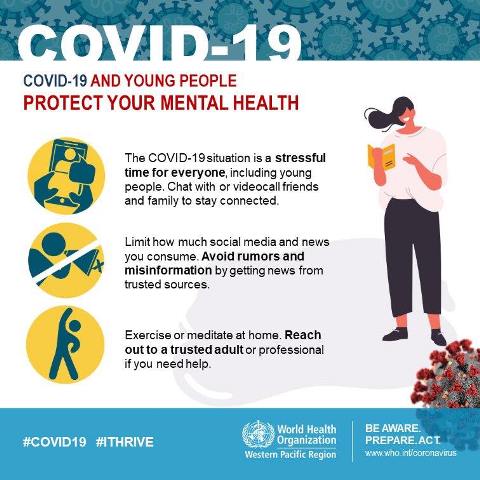 Samoa Ministry of Health advice on Facebook.
Samoa Ministry of Health advice on Facebook.
[This is an excerpt from an article appearing in the current edition of The Round Table: The Commonwealth Journal of International Affairs. Opinion articles do not reflect the position of the Round Table Editorial Board.]
Amongst the many small countries in Oceania with zero COVID-19 cases, seven of them are the low-population Commonwealth nations of Kiribati (population of 119,449), Nauru (12,704), Samoa (198,414), Solomon Islands (680,806), Tonga (103,197), Tuvalu (11,508), and Vanuatu (299,882). These small island countries account for 70% of the zero COVID-19 countries in the region. These nations were amongst the first to recognise the high risks of the outbreak, particularly with their popular tourism industries. By reflecting on this recognition and due to their high level of vulnerability, these nations imposed international border closure measures in the early days of the outbreak. This was aimed at reducing the risks and the attendant crisis that could have taken many lives within their shores.
The COVID-19 outbreak was officially announced on 20 January 2020, and within only five days after this announcement, there were confirmed cases in Oceania. The first case was reported in Melbourne, Australia. The disease took a while to reach other Commonwealth nations in the region. For instance, New Zealand reported its first case on 28 February 2020, while Fiji and Papua New Guinea had their first cases on the 19th and 20th of March 2020 respectively. Nevertheless, the success for the other Pacific Commonwealth nations was due to their rapid response in closing borders or imposing high-level restrictions, which avoided large-scale public health threats.
Island countries, especially if small and populated, are generally recognised as high-risk countries during such outbreaks. The message was clear from the inception – i.e. a need to prevent tourism and travel. Only days after the lockdown of the Chinese city of Wuhan, the original epicentre of COVID-19, some of these nations started to immediately close their borders to international travellers. The only exemptions made are to passengers arriving from Covid-free countries and then with relevant medical documents. This is somehow seen as an immediate lockdown of the island countries, and despite having no infected cases, some of them came under a precautionary state of emergency. Soon after or around the time China imposed border closures for foreigners on 28 March 2020, countries like Tonga, Tuvalu and the Solomon Islands imposed similar measures. The early travel bans from nations like Kiribati, as early as 1 February 2020, suggest immediate responses to the spreading outbreak that was unpredictable for many. In some cases, the immediate response of carrying out compulsory screening and checks on arrival were imposed in the early days of February 2020, only days after the lockdown measures in China.
Following the early border closures, the immediate signs of economic impacts on the tourism industry were noted as early as March 2020. The closure of borders and the additional restrictions meant hardship for what are relatively small economies, but those measures have managed to secure public health since the inception of the outbreak. Samoa’s panic following its first suspected case on 18 March 2020 led to the continuation of international flight reductions, originally imposed in early March 2020. The return of many locals from Australia and New Zealand also called for an escalation of the preventive measures at the borders and later led to the development of ‘COVID-19 State of Emergency Orders’. Samoa also reflected on the situation more cautiously and having regard to their earlier experience of a measles outbreak in 2019. Consequently, Samoa was also seen to have more restrictive lockdown measures than the other small Commonwealth countries in the region.
What is particularly noteworthy is the collective approach of these small countries in the face of the pandemic. The timeline of imposed restrictions, closures and bans in these countries indicates some coordination between them in terms of preventing incoming travellers and restricting international travel on the part of their own citizens. In doing so, these nations have created the possibility of a larger Covid-free zone, which also enables relatively risk-free mobility between them. Economically, this is a smart move if trade and businesses could continue to flow among these countries.
Ali Cheshmehzangi is the Head of the Department of Architecture and Built Environment, University of Nottingham Ningbo China, Ningbo, China.



